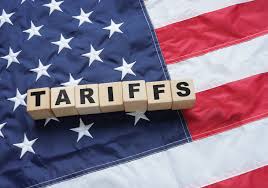The time it will take for the U.S. to recover from the effects of the new tariffs—particularly those introduced in 2024 and 2025 targeting Chinese goods, EVs, solar panels, and key industrial inputs—depends on several variables, but here are the key points to understand:
📉 Short-Term (0–12 Months): Pain & Price Adjustments
- Immediate effects include:
- Higher prices for imported goods (especially electronics, solar tech, and EV components).
- Disruptions in supply chains, especially in industries dependent on Chinese parts.
- Higher costs passed to consumers and small businesses.
- Certain sectors—like automotive, construction, and retail—may take the hardest immediate hit.
- Inflation pressure may resurface temporarily.
Expected recovery outlook:
This phase will last 6–12 months, during which businesses seek alternate suppliers or adjust pricing models.
⚙️ Medium-Term (1–3 Years): Restructuring and Retooling
- Industries will adapt, either by:
- Sourcing from other countries (e.g., Vietnam, Mexico, India).
- Onshoring production where feasible, but that requires time and investment.
- The U.S. government may increase subsidies or tax breaks to buffer domestic companies.
- Trade negotiations may lead to partial easing or exemptions over time.
Expected recovery outlook:
Sectors hit hardest may regain stability within 2–3 years as supply chains are diversified and domestic capacity grows.
🏗️ Long-Term (3–10 Years): Full Adjustment & Competitiveness
- If tariffs stay in place long-term, the economy may structurally shift:
- New domestic industries may emerge.
- U.S.-China trade relations may evolve—potentially thawing under different leadership or circumstances.
- Consumer prices could remain permanently higher in certain sectors unless innovation or productivity gains offset costs.
Expected recovery outlook:
A full, economy-wide rebalancing—especially if manufacturing reshoring efforts take hold—could take 5 to 10 years.
🧮 Key Factors That Will Determine Recovery Speed
- Whether tariffs are temporary or permanent
- Government stimulus or industrial policy responses
- Global market reactions and whether allies adopt similar measures
- Innovation in automation or alternative manufacturing to offset costs
- Whether China retaliates or reshapes its exports through third countries
🧠 Expert Opinions (As of 2025)
- The Peterson Institute for International Economics estimates tariffs could shave 0.3–0.5% off U.S. GDP in the short term.
- Moody’s Analytics projects recovery could take 3–5 years if tariffs are maintained and not offset by domestic incentives.
- If geopolitical tensions escalate, recovery could be delayed further.
Bottom line:
If tariffs remain in place and aren’t paired with aggressive domestic investment, the U.S. economy may feel the strain for several years. However, targeted action—especially around manufacturing, energy, and trade alliances—could accelerate the recovery within 3–5 years.
Would you like a sector-by-sector breakdown (e.g., auto, tech, agriculture) or a visual timeline of the expected recovery phases?

